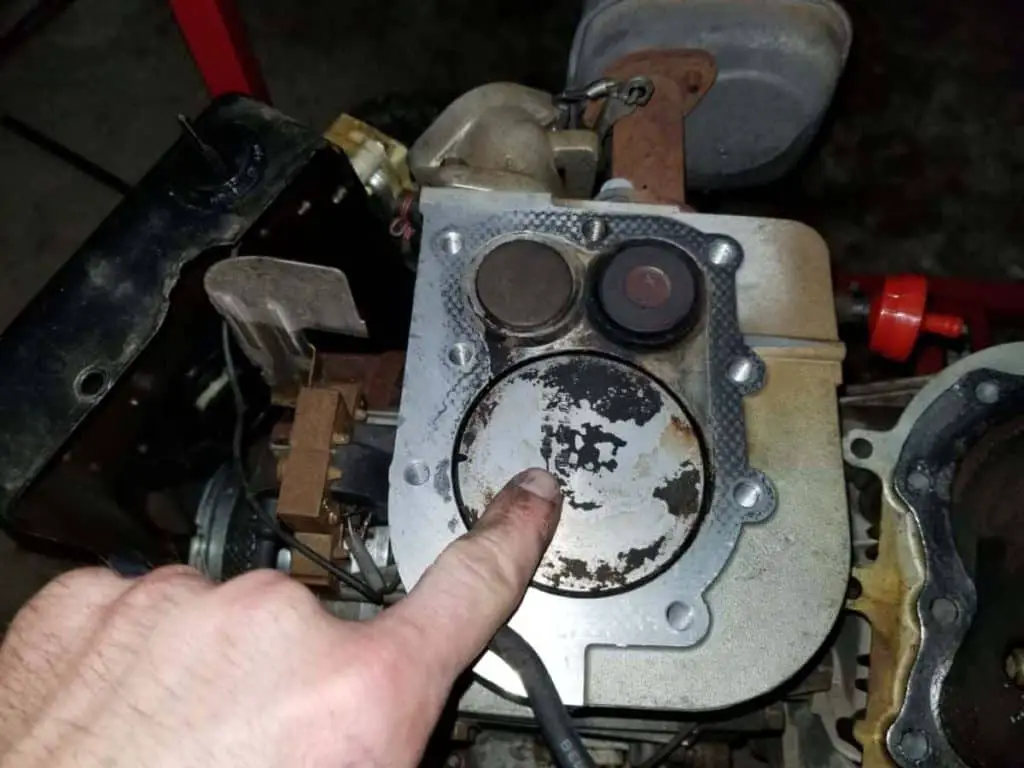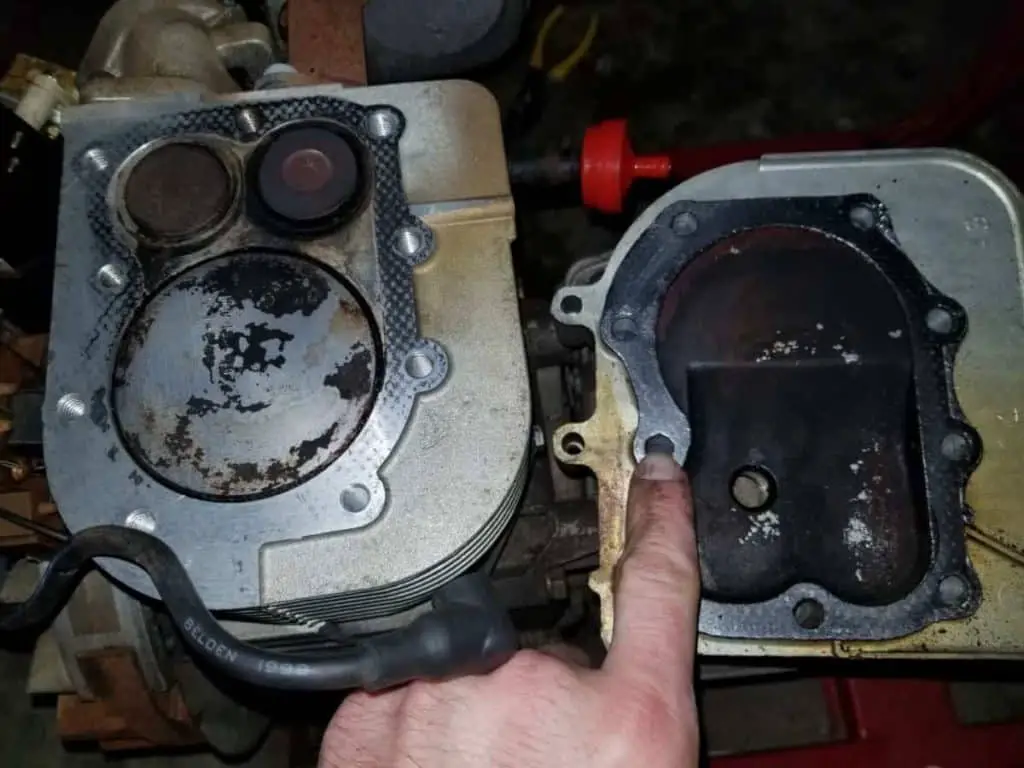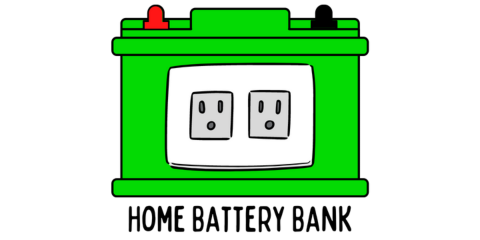Let me guess: the power just went out and when you went to start your generator it is working better as a mosquito fogger rather than it is at giving you functional power?
If that’s you, you’re in the right place! I’ve been fixing up and flipping generators and other small engines for the last 5 years and I’m hoping to explain things in an easy to understand manner since I’m not a professional mechanic either. The good news about that is that if I can fix it, you can too!
A generator will blow heavy white smoke when there is oil being introduced into the combustion chamber that ignites with the air and gas. Causes include: the crankcase is overfilled with engine oil, if it has piston rings that aren’t sealing (or a cylinder that is scored), or it has a blown head gasket.
I’m going to explain simply why each of these things occurs and how you can go about fixing it to get your generator running correctly again and not creating a smokescreen that the military would be proud of!
White Exhaust Cause #1: Exhaust Engine Oil is Overfilled
- Easy to Fix
- Fix: Dump out excess oil
- Recommended: Full oil change with proper quantity and weight of oil
By far, the most common reason your generator will be sending out a cumulus cloud of white exhaust will be because there is too much oil in the crankcase. This is especially a problem if you bought your generator used from someone who wasn’t very mechanically inclined.
Luckily, though, this is a very easy problem to fix. All you need to do is open up the oil drain plug at the bottom of the crankcase and lower the level until the desired level is reached. If you bought your generator used, I recommend doing a full oil change and make sure you use the recommended oil weight for your particular generator and seasonal temperature range.
You might still be wondering how having excess oil leads to the white smoke from the exhaust. The crankcase is simply the cavity where the oil sits and the rotating parts of the engine cycle around in a circle and are lubricated by the oil.
When some people add new oil, they tilt the generator on a 45-degree angle to make it easier to pour the oil in and then they take a reading from the dipstick from that position and when it looks good they put the generator back down on a level surface.
This can overfill the crankcase with oil by x2, x3, x4 or more in capacity! Always leave the generator on a level surface when filling and use a funnel to help get the oil into the fill/drain hole.
In most generators, when you pull out the dipstick the oil level should be at the end of the threads of the dipstick tube. If oil comes pouring out when you remove the dipstick then there is way too much oil in it!

Anyway, when there is excess oil added to the crankcase, the inside of the crankcase builds up added pressure as the engine gets very hot during operation. The increased internal pressure pushes the liquid oil up the combustion cylinder to the bottom of the piston.
From there, it works its way around the piston, passed the 3 rings (since the rings simply cannot prevent that much volume from seeping by), and the oil then flows on top of the piston where it is compressed with the fuel/air mix from the carburetor and is part of the combustion process.
Typically, the exhaust is clear when the combustion is complete and a proper ratio of air to fuel is achieved, but when you add oil to the mix, the result is a white exhaust.
If left alone and if the engine continued to run, it would produce white smoke until it had burned off enough oil until the oil level in the crankcase returned to tolerable levels for acceptable internal pressures.
White Exhaust Cause #2: Piston Rings or Cylinder Wall are Compromised
- Advanced level of knowledge and tools needed to fix, but it is doable
- Breakdown entire engine to remove piston and replace piston rings, or replace entire generator if cylinder wall is badly damaged
If the cause of your white smoke is piston rings that are damaged, then you are in for a bit of work if you plan on fixing things yourself.
If the problem is due to the cylinder wall of the combustion chamber being scored by carbon debris or simply worn wider through the use of the generator over the years, then you are probably going to be looking for a new generator. You can replace these things, but it is not worth it when you consider the price of replacement parts vs. the cost of a new unit.

As long as the cylinder wall of the combustion chamber is in good shape and you simply have a piston ring or two that aren’t working, then you can replace them and save money from buying a whole new unit.
Depending on the make and model, you’re essentially going to have to remove the recoil starter cord, then the starter cup and fan wheel. After that the flywheel and then you’ll have to remove the bolts and break the seal on the crankcase cover to get into the sump of the crankcase.
From there, you’ll see the inner workings of your engine and you’ll be likely removing more parts to access the piston and connecting rod.
The reason that a faulty piston ring or a scored/gauged cylinder wall will cause white exhaust is similar to reason #1 in the first section. As the engine is running at 3600 RPM’s that piston is moving extremely fast.
If the rings don’t make a proper seal between the piston and the cylinder wall, or if the cylinder wall itself has damage to it that prevents a seal between itself and the rings, then oil will be splashed up from the crankcase below and will glide up the cylinder wall with the piston but will work its way to the top and combust with the air and gasoline in the combustion chamber.
White Exhaust Cause #3: Blown Head Gasket
- Moderate level of difficulty
- Remove head cover (you may have to remove other things first) and clean combustion chamber of carbon deposits and replace head gasket
- Engine oil change recommended afterward if compressed gasses and exhaust were able to enter crankcase
I guess it depends on the engine, but I would consider this one to be an easier fix than the previous section — at least on the engines that I’ve had the pleasure of working on.
Where the combustion occurs, as the piston squeezes and compresses the fuel and air, is known as the combustion chamber. This is essentially where the engine block and the head (cover) meet and are bolted together.

Between the two is the head gasket, and depending on the engine type you have it may be a gasket that only goes around the outside border, or it might have dividers in it that separate the combustion chamber and the pushrods, for example.
Engines where the head gasket has a divider that separates the combustion chamber and the pushrods are susceptible to having the head gasket blow out internally between the two and not externally to where it would be blowing the compression outside the engine.
When the divider between the combustion chamber and the pushrods is damaged, each time the piston cycles up to compress and back down into the crankcase, it will create positive and negative pressures internally.
As it compresses and combusts it will blow some of that compression and exhaust through the damaged gasket and into the pushrod cavity where it will make its way to the crankcase. This is why you’ll see your oil appear to be steaming if you were to pull out the dipstick. It’s the hot exhaust trapped in your crankcase.
This increase in pressure from the exhaust and compressed gasses being forced into the crankcase will also cause the engine to vent out the pressure and oil will typically be forced out the external fuel pump (if you have one), or up through the breather tube and into your air filter. If you see oil leaking from your air filter, there’s a great chance your head gasket is blown.
Now, let’s mention when the piston goes back into the crankcase after its pushed down from the combustion, it will create a vacuum effect in the combustion chamber. Since the gasket is blown between the combustion chamber and the pushrod housing, it will naturally suck in oil from the crankcase that lubricates the pushrods.
This oil will then be combusted with the incoming fuel and air mixture and white exhaust will flow out of your generator’s exhaust.
Let Me Know How it Goes!
I hope you found this article helpful! If you can think of any other reason why an engine might blow white smoke let me know and I’d love to update this list. If this article helped you out, I’d love to hear that as well! Good luck with your power outage!
contact.homebatterybank@gmail.com
